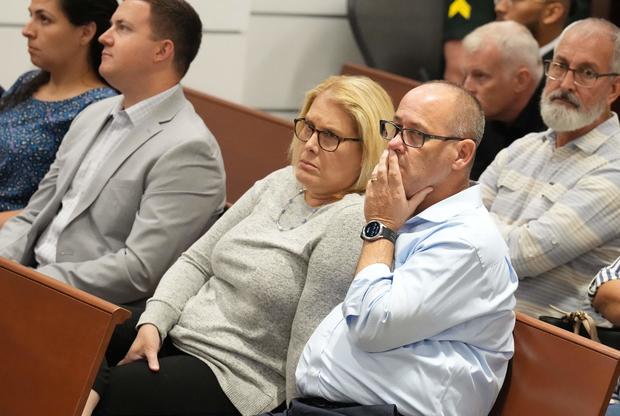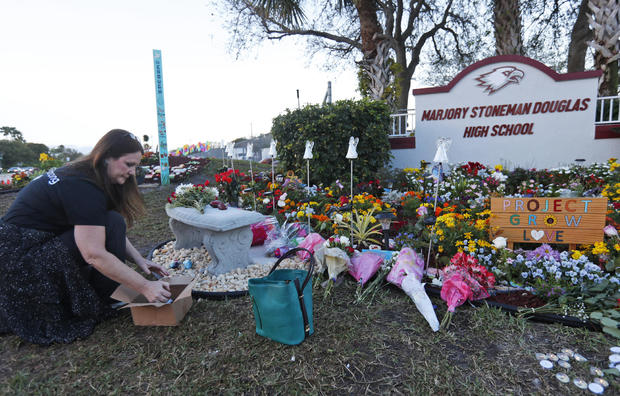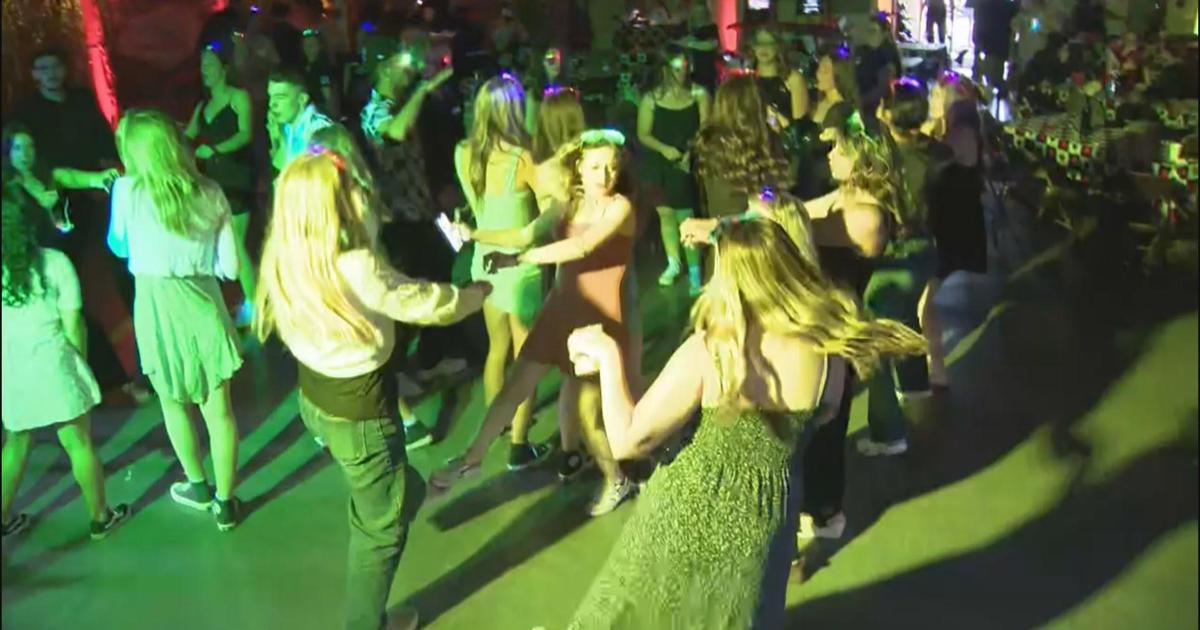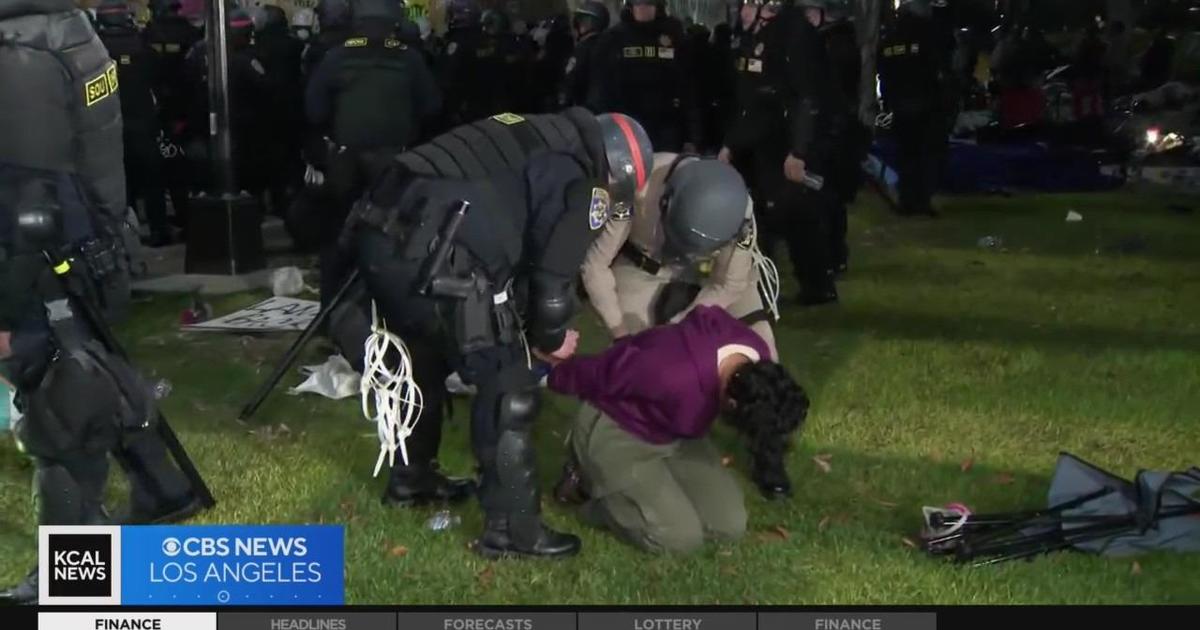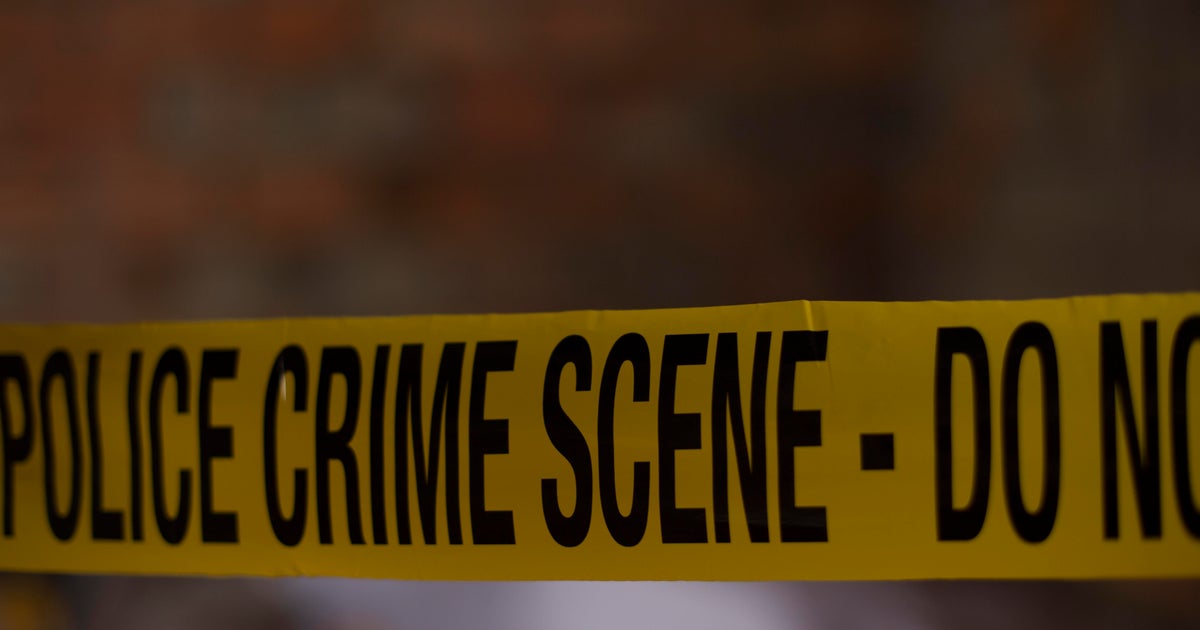Jurors see graphic video of Parkland school shooting as gunman's death penalty trial continues
Jurors who will determine whether Nikolas Cruz receives the death penalty for murdering 17 people at his Parkland, Florida, high school were shown graphic video footage of the massacre in court on Tuesday.
The final stage of the gunman's sentencing trial, in which jurors will decide if the 23-year-old should face a death sentence or life in prison without parole, began this week after he pleaded guilty last October to 17 counts of murder and 17 counts of attempted murder for the killings of 14 students and three staff members inside Marjory Stoneman Douglas High School on February 14, 2018.
Video taken from security cameras that recorded parts of the Parkland shooting showed the defendant stalking a three-story building and shooting victims multiple times, attorneys said Tuesday. The video was not shown to the gallery, where parents of many of the victims sat.
Prosecutors said the video showed the defendant shooting many of his victims at point-blank range, adding that in some instances, the shooter returned to a wounded person and killed them with a second volley of shots.
The 12 jurors and 10 alternates stared intently at their video screens. Many held hands to their faces as they viewed the 15-minute recording, which has no sound.
Some started squirming. One juror looked at the screen, looked up at the defendant with his eyes wide and then returned to the video.
The defendant looked down while the video played and did not appear to watch it. He sometimes looked up to exchange whispers with one of his attorneys.
The video was played over the objection of the defense, who argued that any evidentiary value it has is outweighed by the emotions it would raise in the jurors. They argued that witness statements of what happened would be sufficient.
Circuit Judge Elizabeth Scherer dismissed the objection, saying a video that accurately reflects the defendant's crimes does not unfairly prejudice his case. Prosecutors are using the video to prove several aggravating factors, including that the defendant acted in a cold, calculated and cruel manner.
While referencing videos the defendant recorded on his personal cellphone days before the shooting, where he articulated his intent to carry out the massacre, lead prosecutor Mike Satz described him as "cold, calculated, manipulative and deadly" in his opening statements Monday morning.
This is the deadliest mass shooting to go before a jury in U.S. history.
Later during day two of the trial, jurors heard testimony from Christopher McKenna, who was a freshman at Marjory Stoneman Douglas when the shooting occurred. He had left his English class to go to the bathroom and exchanged greetings with two students, Luke Hoyer and Martin Duque, as they crossed paths in the first-floor hallway. McKenna then entered a stairwell and encountered the defendant assembling his AR-15 semiautomatic rifle.
"He said, 'Get out of here. Things are about to get bad,'" McKenna recalled.
McKenna sprinted out to the parking lot as the defendant went into the hallway and began shooting. McKenna alerted Aaron Feis, an assistant football coach who doubled as a security guard. Feis drove McKenna in his golf cart to an adjacent building for safety, and then went to the three-story building McKenna fled from.
By then, the sounds of gunfire were already ringing out across the campus. Feis went in and was fatally shot immediately by the defendant, who had already killed Hoyer, 15, and Duque, 14, and eight others. Cruz then continued through the second floor, where he fired into classrooms but hit no one. When he reached the third-floor, he killed six more people.
The jurors also heard testimony from English teacher Dara Hass, who had three students killed and several wounded in her classroom when Cruz fired through a window in the door.
"The sound was so loud. The students were screaming," said Hass, who wept and dabbed her eyes with tissue as she testified. She thought it might be a drill, but then she spotted the body of 14-year-old Alex Schachter, who had been fatally shot at his desk.
"That's when I saw it wasn't a drill," she said.
Two 14-year-old girls also died in the classroom: Alaina Petty and Alyssa Alhadeff. When police arrived and evacuated her students, Hass said she did not want to leave but officers convinced her.
"I wanted to stay with the students who couldn't go," she said, referring to Schachter, Petty and Alhadeff. When prosecutor Mike Satz showed her photos of their bodies in her classroom, she sobbed.
One student in her class, Alexander Dworet, said he originally thought the loud bangs were the school's marching band, but then he felt a "hot sensation" on the back of his head where he had been grazed by a bullet and "I realized I was in danger." He and other students scrambled away from the window, using Hass' desk as a barrier.
Dworet's 17-year-old brother, Nick, was across the hall in his Holocaust studies class. The defendant fired into that classroom, too, killing him.
Two other witnesses from that Holocaust studies class also testified Tuesday. Samantha Grady said that her friend Helena Ramsay warned her to hide. Grady told the court that she was injured during the shooting and saw two of the victims in her classroom, one of whom was Ramsay.
Samantha Fuentes, another student who was shot while in Holocaust history class, said she remembered seeing two other classmates, including Ramsay, dead beside her. Fuentes said her wounds required multiple surgeries and she now lives with chronic spasms as a result of her injuries.
The jurors also heard testimony on Tuesday from student William Olson, who was also in English class when the shooter fired through a window in the door.
William Olson was writing an essay when "all of a sudden I hear a bunch of noise in the hallway. I did not know what it was."
Olson said he looked over and saw another freshman draped over a desk, blood pouring out of him as he died.
At that point, Olson said he and other students scrambled next to the teacher's desk.
"While I'm laying in front of the desk I realize there's blood all over me," he said. He had suffered arm and leg wounds.
